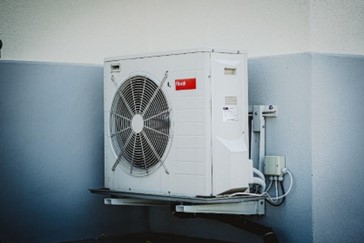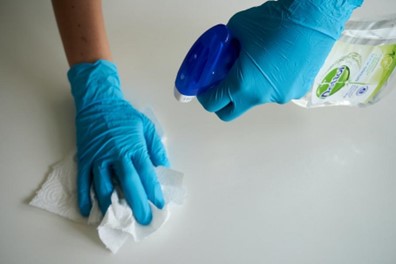As the summer warmth gives way to the crisp embrace of fall, it's time to…
Improving Indoor Air Quality with Proper Cleaning and Maintenance

Air quality is crucial for both your health and productivity. As such, anything that can help you maintain it is crucial! Well, we’re here to help with our guide on improving indoor air quality with proper cleaning and maintenance.
Green Up Your Space the Right Way
First, you must learn to keep your environment clean and healthy because it’s not all about constant cleaning. A proper application of other methods is required, especially when it comes to efforts such as improving indoor air quality. For this, using plants is very effective. But this comes with a caveat: you need to use them correctly. Or rather, the plants themselves require proper upkeep to do their job without actually hurting your efforts. Plants freshen up the space and provide us with oxygen. But that’s not going to help as much as it should if you let mold develop around the plants. This typically happens due to over-watering, which lets humidity accumulate too much in and around the pots used for the plants. So, pay attention, clean the mold if required, and keep your watering at suitable levels.
Change Out Your Air Filters
Another thing to remember when improving indoor air quality is the threat of air filters. Typically, you see air filters as something helpful. And they admittedly are, so long as they are maintained properly. If you neglect to change them out or clean them regularly, the buildup of dust, dirt and other irritants means they are hurting you instead. And this is even more harmful if you have allergies! For example, turning on an AC after months of not using it without cleaning is a guaranteed way to give yourself an allergy attack. At the same time, think about how pervasive air filters are in your office. They are used in ACs, kitchen vents, vacuum cleaners, etc. Neglecting any of them has a direct negative impact on your air quality.

The Danger of Rugs and Carpets
Rugs and carpets are basically the devil for anyone with allergies. This is because they are the nest beds for allergies and all sorts of other nasty things. Especially if you have thick, woolen rugs or carpets, they work better to collect all the dust and dirt on your floor than your vacuum does. And it is impossible to hoover them or to easily clean them in any way. Instead, you would need to spend an ungodly amount of time scrubbing. And if there was any serious construction or renovation in your office, and they were exposed to all that dirt? Then you’ll appreciate how post-construction cleaning services can make your life easier since there’s no way you’re cleaning off that carpet or rug on your own!
And if you’re prone to allergies, but don’t like empty floors everywhere, a perfect alternative is installing artificial grass. You might think the only use of such grass is making your curb evergreen throughout the year. However, it’s convenient and easy to maintain if you keep it indoors as well! It’s an easy way to spruce up your office and be safe, too, as most of them are fire-resistant.

Clean Your Air Ducts
Air ducts are another area that needs to be cleaned regularly. They keep the air inside your office circulating and prevent it from going stale. However, what about when they are full of allergens? They you are, once again, simply shuffling stale and allergy-inducing air around your environment. All air ducts do in this scenario is ensure you have no space to retreat to escape your allergies. Particularly neglected air ducts can serve as the nesting grounds for infestations that you really want to avoid.
Don’t Let Dust Sneak Up on You
We’ve talked a lot about improving indoor air quality by cleaning areas people typically neglect. Yet, just as often, dust piles up in extremely obvious places. Most people think about cleaning their work desks and other frequently used areas. At the same time, however, they only occasionally clean shelves, their books collections, and the tops of tall cabinets. This is because they think dust accumulates there at the same rates a it does on their frequently used surfaces. This, however, is false and leads to a buildup of dust. After all, there is no way that your work desk gets dusty as quickly as those shelves no one touches! Human activity naturally dislodges the dust and keeps it from accumulating.

Let in the Fresh Air Regularly
The simplest way of improving air quality is to regularly air out the rooms you spend a lot of time in. Human activity just naturally makes air quality worse, and instead of relying on expensive air filtration devices, just opening up windows is both cheaper and more effective! The only problem is doing so during colder seasons, but it’s still perfectly possible to endure a little cold for the sake of spending time in more comfort afterward.
Reduce Clutter and Clean Regularly
The final way of improving indoor air quality is to reduce the clutter in your environment. This is because random items that aren’t handled often more easily accumulate dust and other allergens. And they make it harder to clean them up, too. Just think about books that are just sitting on a shelf. They are tough to clean off the dust as is. And now, imagine more complex objections, such as staplers, laptops, and other office equipment. Now, some of these you need regularly. But many of it people tend to keep it on hand ‘just in case’. And all those items do is accumulate dust and dirt. By changing cleaning habits in the office, you can really improve its cleanliness and air quality.
A Concerted Effort to Improve Indoor Air Quality
Improving indoor air quality with proper cleaning and maintenance is something that will take work and dedication. After all, dust doesn’t stop accumulating just because you cleaned it all up once! So, keep in mind that you will need to actively work to maintain your improved air quality.
